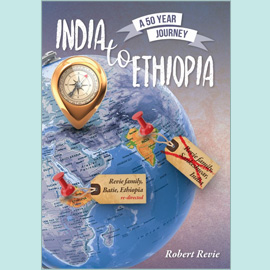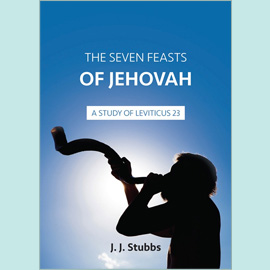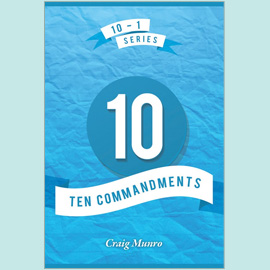Jim Anderson was a small man physically but of great stature in the Kingdom of God. He was a bundle of energy. Even his speech, both in conversation and preaching, had a certain breathlessness about it. He willingly devoted himself, his time, talents, and almost boundless energy to the service of the Lord and His people. He served in his home assembly, the surrounding area, and much further afield. He was a Bible teacher, writer, door-to-door evangelist, Sunday School superintendent - a real all-rounder. Not long before his home call he quoted in the presence of friends the text, "And I will very gladly spend and be spent for you" (2 Cor 12.15), and expressed that it contained his own aspirations. To a very large degree, by God’s grace, they were fulfilled.
Jim was born in the Ayrshire mining village of Annbank and spent his whole life there. To many Christians in assemblies in Scotland and beyond, he and Annbank were almost synonymous. His parents were in fellowship in the assembly in their community. He came to personal trust in Christ when he was twelve in meetings conducted by John MacAlpine. Later he was received into the fellowship of the assembly that met at Annbank Gospel Hall.
After leaving Ayr Academy, he proceeded to Glasgow University to do an arts degree. He was able to complete only one academic year before wartime call-up intervened and he became a conscripted mine worker for the rest of the war. He used his spare time to tremendous effect, continuing his studies in history by reading for an external London University degree. He was able to complete this course by self-study and correspondence in almost the same time that he would have taken to finish the Glasgow full time course. What a tribute to our brother’s self-discipline and diligence. Those who knew him best all comment that throughout his life Jim never wasted time but sought to redeem it.
After qualifying as a secondary teacher he taught in several schools in Ayrshire including his own old school, Ayr Academy. Later, he transferred to the field of Further Education and worked at Ayr College until he retired from professional life in 1985. Jim once wrote, "It cannot be over stressed that one can serve the Lord well without committing himself to full-time service". He was an outstanding example of this himself, combining his teaching career with a wide variety of spiritual activities. Jim felt that having a working life enhanced his service for the Lord as it kept his feet on the ground and himself in touch with the realities of life. His deep interest in young people was a common strand between his school and college work and his assembly service.
From his early Christian life, Jim had a deep interest in the things of God. As a teenager he engaged in open-air meetings and other out-reach in surrounding villages. In many of these ventures his partner was George Waugh, a respected Bible teacher who married Jim’s sister Mary. The Ayr Bible Readings took place for the first time during the Second World War and Jim has recorded the tremendous impression made on him by Harold St. John and his ministry especially in Mr St. John’s visit to these meetings in 1945. In 1989 he was able to collect and edit Mr St John’s writings for publication. He often fondly remembered the preaching and teaching of Mr Tom Richardson in a gospel campaign in Annbank in 1946
Another formative influence in Jim’s early days was Willie Scott of Machermore. With other young men, our brother spent summers with Mr Scott in his evangelism in Galloway. Some of the "Machermore boys" went on to the mission field or to full time work at home. Jim never did, but he developed a passionate interest in evangelism and world mission which marked him for life. He also spent a summer with the Cumberland and Westmorland Gospel Van and another one, after his marriage, with Charlie McEwen of Exeter in Devon village work.
Our brother soon developed into a capable Bible teacher with a wide ministry, even ministering at a conference at Camelon, near Falkirk, on his honeymoon in 1950! His ministry took him to Scotland, England, Wales, Northern Ireland, and to Canada. He spoke at many conferences over the years. He was one of the speakers on several occasions at the Bible Reading weeks at Ayr, Aberdeen, and Kilravock.
Jim had a comprehensive grasp of the broad sweep of Scripture. He delighted in bringing out the up-to-date, practical relevance of a passage and exhorting his hearers to greater commitment. The Acts and the pastoral epistles were favourite books which gave him ample scope for the leading themes of his ministry which were mission and evangelism, and the living out of New Testament Church life in the 20th century.
Not surprisingly, these were also the themes emphasised in his written ministry. Jim wrote the volume on Acts in the What the Bible Teaches series published by John Ritchie Ltd. Although on a much smaller scale, Jim’s most characteristic publication was his pamphlet Our Heritage, produced in the early 1970s from a series of articles written previously. The aim was to give younger Christians in assemblies an appreciation of their history and to re-emphasise positively assembly distinctives in days when they were being discarded or ignored in some quarters. He wrote with great zeal, seeking to re-kindle the devotion of earlier generations in his readers. He emphasised the value of the truths recovered by the early brethren and practised in the assemblies over the years. Jim’s tone was always constructive as he wanted to see these truths continue, but held along with a spirit of aggressive evangelism and spiritual commitment in every-day life. As Jim rightly argued, assembly principles and practices can only flourish in such an atmosphere. These issues greatly occupied his editorials during his service as one of the editors of the Believer’s Magazine. Towards the end of his ministry Jim was sorrowful at the growing polarisation of assemblies. He always sought to preserve and promote unity among the Lord’s people.
Jim’s deep interest in the history of the assemblies and his wide knowledge of so many of the Lord’s servants bore fruit in his biographical sketches: They finished their course, and They finished their course in the 80s. These are valuable records of a wide range of brethren who together made a significant contribution to the life and witness of the British assemblies in the 20th century.
Jim served tirelessly in every activity of the Annbank assembly. He was a great encourager, especially of young men and women. Any sign of spiritual interest was cherished and fanned into flame. He was deeply respected by his fellow villagers, often conducting funeral services for people with little or no connection to the assembly. Few brethren have had so great a testimony and influence, not only in their own assembly but also in their own community, yet this was combined with a wide-spread itinerant ministry and full-time secular work.
He was actively involved in the Ayrshire Gospel Tent, now the Ayrshire Gospel Outreach, arranging many of the campaigns and even helping with the erection of the tent. He constantly sought to muster support for the meetings, not only in the assembly, but also among the villagers. He also edited the monthly gospel leaflet, The Messenger. Finding it difficult to get regular contributors, he had to write many of the articles himself.
The foreign field was not forgotten. Our brother possessed a detailed knowledge of missionary work throughout the world, and his interest in this expressed itself in the arranging of report meetings, his involvement as a trustee of the Lord’s Work Trust, and the building of the Annbank Missionary Home (for which he and Helen donated the ground).
Jim was blessed with a happy home life. In 1950 he married Helen Brown from Lanarkshire who was always fully supportive of his varied service. Indeed his activities could not have been sustained without her steadfast help to say nothing of their gracious and generous hospitality. Our brother was very human and approachable. He had a warm sense of humour and had no trace of pomposity or sanctimoniousness. He was concerned about living out New Testament faith in the 20th century and was deeply concerned that many Christians of his generation had lost their spiritual edge as they grew older.
He continued in harness to the end, maintaining most of his activities until a few days before his home-call in December, 1992. In his short final stay in hospital, he witnessed earnestly to his fellow patients. His gravestone reads: "A man who believed in Christ, lived for Christ and died in Christ". That sums up Jim’s life. We desperately need many like him today.









